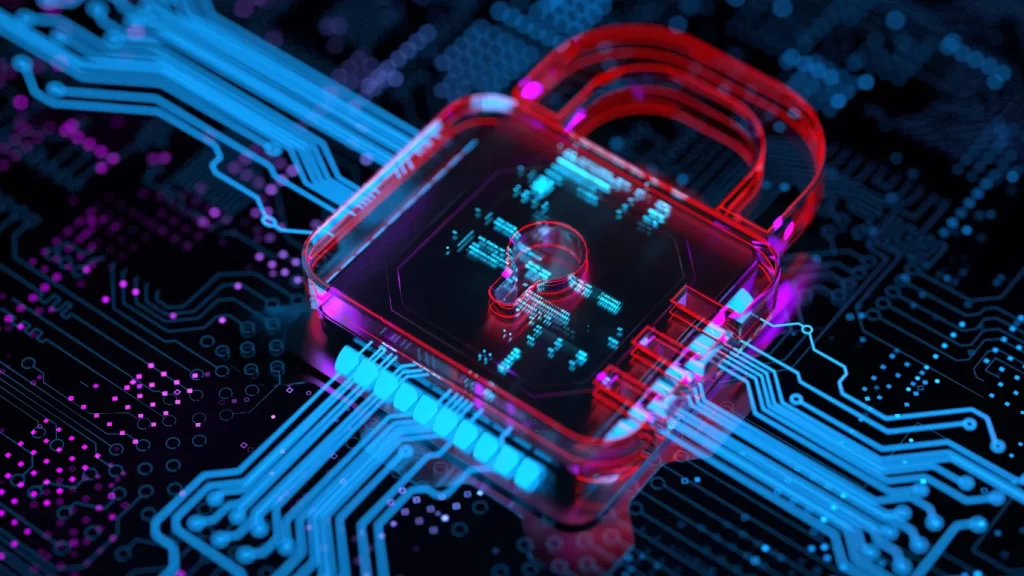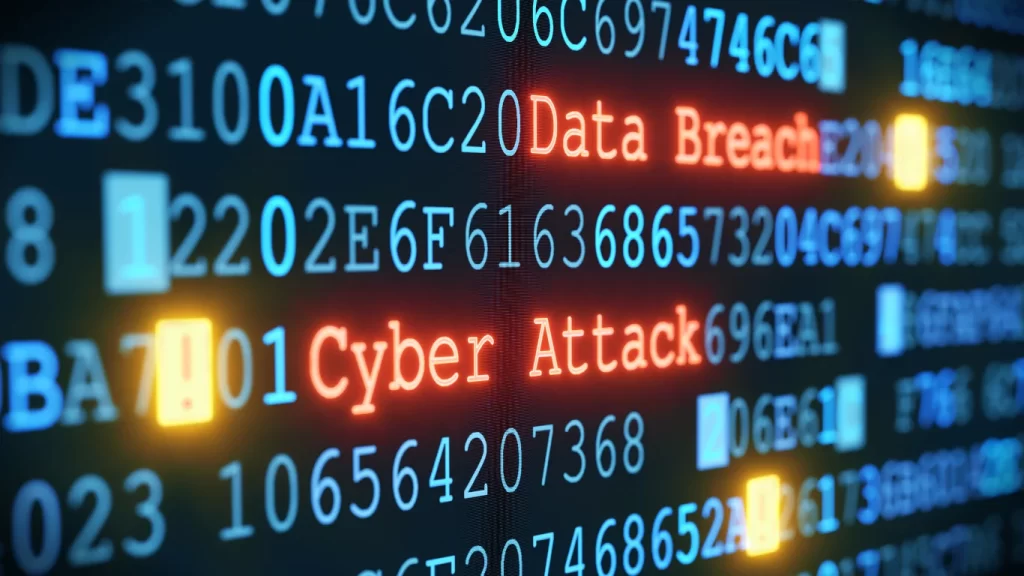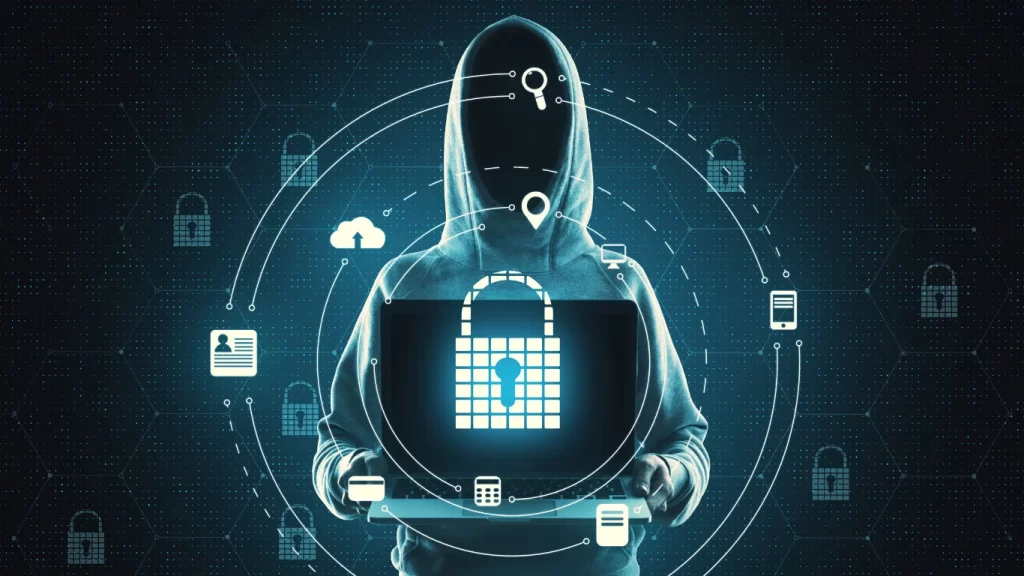Antivirus software is a pivotal security mechanism tasked with the prevention, detection, and elimination of viruses and other malicious entities from computers and networks. Its continuous operation as a background process allows the scanning of devices to thwart and limit the dissemination of malware. With its robust real-time protection capabilities, antivirus software shields against a broad spectrum of cyber threats, from keyloggers and Trojan horses to ransomware attacks, highlighting how antivirus software prevents cyber threats effectively.
With the cyber landscape constantly evolving, antivirus companies, including renowned names like AVG Technologies, Kaspersky, and McAfee, play a crucial role in safeguarding digital assets. These providers offer both free and commercial products, ensuring that antivirus solutions are accessible to a wide range of users. This guide delves into the mechanics behind how antivirus protects from cyber threats and underscores the significance of antivirus software as a cornerstone in defending against the tactics employed by hackers, making it a critical tool in the cyber security arsenal.
How Antivirus Protects From Cyber Threats
Antivirus software operates through a multifaceted approach to protect devices from malware threats. At its core, the software scans files and the computer’s memory for patterns indicative of malware, utilizing a database of known malware signatures for identification. The process involves:
- Signature-based Detection: This traditional method compares the scanned files compared to a database of known malware signatures. It’s effective for known threats but requires regular updates to include new malware definitions.
- Heuristic-based Detection: By examining the behaviour of files, heuristic detection identifies potentially harmful software based on unusual behaviour or suspicious patterns, targeting previously unknown viruses.
- Behaviour-based Detection: This method scrutinizes the actions of programs to detect and block malicious activities, focusing on the intent behind the code rather than its appearance.
Furthermore, advanced techniques such as sandboxing and machine learning are employed to enhance detection capabilities. Sandboxing isolates suspicious files in a secure environment to observe their behaviour without risking the system’s security, while machine learning algorithms learn from a vast dataset of malware and benign programs to improve threat detection over time. Automatic and manual scanning options, along with real-time protection, ensure comprehensive coverage against both known and emerging threats, making antivirus software a crucial component in cybersecurity defences.

The Evolution of Antivirus Software
The journey of antivirus software from its inception to its current state is a testament to the dynamic nature of cybersecurity threats and the relentless efforts to counteract them.
- Early Beginnings and Notable Milestones:
The first computer virus, Creeper, emerged in 1971, targeting PDP-10 mainframe computers. This was followed by several key developments:
- 1981 saw the arrival of the ‘Elk Cloner’, the first virus to spread “in the wild,” affecting Apple II computers.
- By 1987, the cybersecurity landscape witnessed the creation of the first true antivirus software by Bernd Robert Fix, aimed at combating the Vienna virus.
- The late 1980s introduced G Data Software AG’s antivirus for Atari ST and saw the founding of McAfee, which released VirusScan.
The 1990s brought significant advancements with the formation of the Computer Antivirus Research Organization (CARO) and the launch of Norton Antivirus by Symantec in 1991.
- The Evolution into Modern Solutions:
- The progression into the 21st century marked a shift towards more sophisticated mechanisms:
- 2005: F-Secure’s BlackLight, an anti-rootkit tool, was developed.
- 2008: McAfee unveiled Artemis, pioneering cloud-based anti-malware.
- By 2011, AVG introduced Protective Cloud Technology, enhancing real-time threat detection.
- The Current Landscape:
- Today, antivirus solutions encompass a range of forms, from standalone scanners to comprehensive internet security suites. Innovations such as machine learning and cloud-based programs have significantly bolstered antivirus capabilities, with antivirus companies constantly updating malware signatures to tackle new threats. As of 2014, AV-TEST reported a staggering 120,000,000 unique malware samples, underscoring the escalating challenge and the critical role of antivirus software in cybersecurity defence.

Comparing Antivirus Software
In the realm of cybersecurity, selecting the right antivirus software is paramount for both individual users and businesses. With numerous options available, including Norton, McAfee, Avast, and Kaspersky, the choice often boils down to specific needs and preferences. Here’s a closer look at how these antivirus solutions stack up against each other:
- Features Comparison:
- Real-time Protection: All offer robust real-time scanning, but Norton and Bitdefender are often praised for their less intrusive operation.
- Firewall: McAfee and Norton provide highly customizable firewall settings, standing out in this category.
- VPN Services: While most premium versions include VPN services, Norton offers unlimited VPN access, distinguishing itself from others.
- Additional Features: Bitdefender shines with its multi-layer ransomware protection and advanced threat defence.
- Performance and Impact:
- Based on PC Mark 10 Professional Edition tests, K7, Avira, ESET, and Kaspersky were noted for their minimal impact on system performance, categorizing them as ‘Fast’ to ‘Very Fast’.
- Pricing and Value:
- Antivirus software typically starts around $40 per year. However, McAfee and Norton frequently offer deals that bundle their antivirus with other security tools, providing added value.
Choosing the right antivirus involves considering detection rates, system compatibility, and extra safety features. While free versions offer a basic level of protection, investing in a paid version ensures comprehensive coverage against a wider array of threats, with features like automatic updates and advanced threat detection.
The Role of Antivirus in a Comprehensive Cybersecurity Strategy
Integrating antivirus software into a comprehensive cybersecurity strategy is paramount, as it serves as the first line of defence in detecting, preventing, and removing malware and viruses from systems and networks. Here’s how it fits into a broader security framework:
- Multi-layered Defense Approach:
- Antivirus Software: Utilizes signature-based, behavior-based, and heuristics-based detection methods to identify and block cyber threats.
- Firewalls: Monitor data passing through your computer, preventing malware from entering your system.
- Regular Updates: Keeping software, operating systems, and antivirus programs up-to-date ensures protection against the latest threats.
- User Education: Training on recognizing phishing attempts and malicious websites is critical.
- Complementary Security Measures:
- Strong Passwords and Multi-factor Authentication (2FA): Add an extra layer of security beyond just antivirus software.
- Data Backup and Encryption: Protects data integrity and privacy, even in breach incidents.
- Network Security: Includes using secure Wi-Fi networks and VPNs to safeguard data in transit.
Antivirus software, while crucial, is not a standalone solution but a significant component of a holistic cybersecurity strategy. It provides real-time and scheduled protection, blocks harmful sites, and removes existing malware. However, due to the ever-evolving nature of cyber threats, maintaining a comprehensive approach that includes regular system scans, software updates, and employing additional security measures like firewalls and user education is essential for optimal protection.
Common Misconceptions about Antivirus Software
The Myths Surrounding Antivirus Software
In the realm of cybersecurity, misconceptions about antivirus software can lead to inadequate protection measures. Here, we address and debunk common myths to clarify how antivirus software truly functions in safeguarding your digital life:
- Myth 1: Antivirus Software Slows Down Your Device
- Fact: While running multiple antivirus programs can hinder performance, a single, well-chosen antivirus solution often enhances system efficiency by eliminating malware that slows down your device.
- Myth 2: Limited Virus Protection
- Fact: High-quality antivirus software defends against a vast array of cyber threats, not just viruses, through signature-based detection, behavioural analysis, and machine learning techniques.
- Myth 3: Antivirus Software and Apple Products
- Fact: No device is immune. Apple products, like any other technology that connects to the internet, are vulnerable to malware and require appropriate antivirus protection.
- Myth 4: Complete Protection Guarantee
- Fact: No antivirus software offers 100% protection. It significantly reduces risk but should be part of a broader cybersecurity strategy that includes regular updates, firewalls, and user education.
Understanding these truths about antivirus software reinforces the importance of employing a comprehensive cybersecurity strategy. It’s not just about installing antivirus software; it’s about choosing the right one and complementing it with other security measures to ensure the best defence against cyber threats.

FAQs
How does antivirus software safeguard devices from malicious threats?
Antivirus software secures devices by identifying, isolating, and removing harmful code to prevent malware from inflicting damage. These programs are designed to update themselves automatically to defend against new viruses and diverse forms of malware.
What function does antivirus software serve in maintaining cybersecurity?
Antivirus software plays a critical role in cybersecurity by automatically intercepting pop-ups and spam from dubious websites, thereby keeping the system safe. It also offers web protection by shielding users from fraudulent sites that cybercriminals use to steal credit card and banking details.
In what ways does comprehensive virus protection contribute to the safety of your files and computer in everyday use?
Comprehensive antivirus protection is crucial as it defends your device against viruses that could erase your data, impair performance, crash your system, and prevent hackers from using your email to distribute spam. It routinely checks your files and incoming emails for viruses, removing any detected threats.
Does antivirus software provide a defence against cyber attacks?
While antivirus software is not the ultimate defence against cyber attacks, it is quite effective at protecting your device from viruses. It continuously scans your operating system, files, and emails to identify and eliminate potential threats.
Wrapping Up: How Antivirus Software Prevents Cyber Threats
Throughout this guide, we have explored the multifaceted role of antivirus software in securing digital environments against the myriad forms of cyber threats that plague the modern world. From early detection methods and the evolution of antivirus solutions to the integral part they play within a comprehensive cybersecurity strategy, it’s clear that antivirus software is a pivotal line of defence. The comparison of top antivirus products and the debunking of common misconceptions further underscore its indispensability and the critical need for informed selection based on individual or organizational requirements.
As cyber threats continue to grow, so must our approaches to maintaining robust cybersecurity defences. Antivirus software, while not a panacea, forms a crucial component of a layered security strategy that includes regular updates, firewalls, and user education. Recognizing its significance and deploying it alongside other preventive measures will significantly bolster our collective defences against the increasingly sophisticated threats that emerge in the digital realm. Embracing this comprehensive view and remaining vigilant in the face of new challenges will ensure our digital assets are protected now and into the future.





